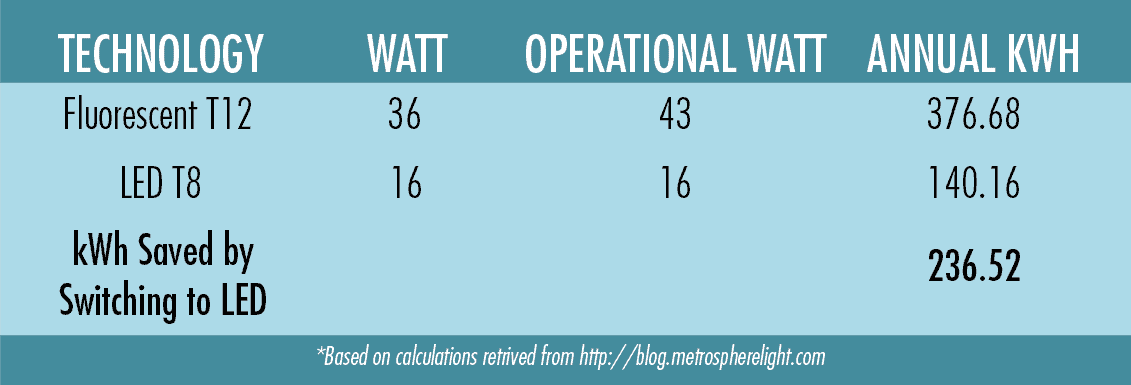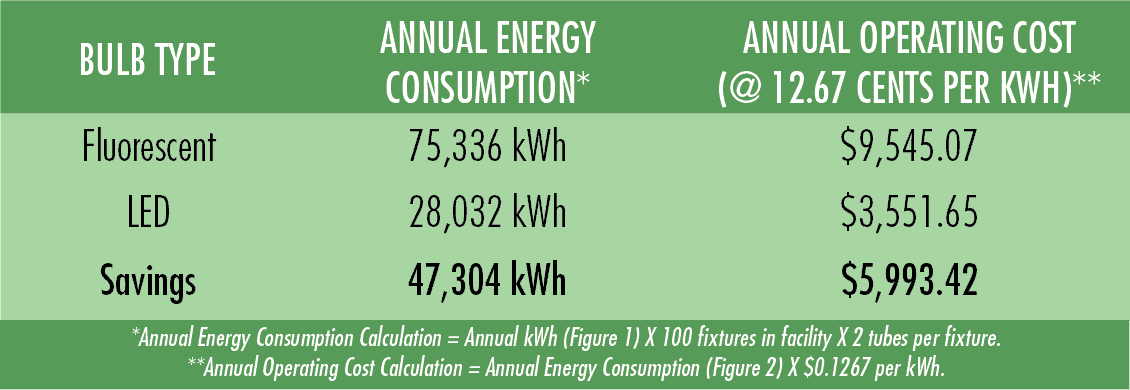School of LED: Lighting Subjects 101

What is a light-emitting diode?
Light-emitting diodes (LEDs) are solid-state lighting (SSL) devises that convert electric energy into light. They are called solid-state because there are no gases involved in LED technology. They are also a directional light source, meaning they emit light in a specific direction, which decreases the amount of wasted light. Even though some LEDs might appear “white,” there are no actual white LEDs. They naturally produce a blue light that can then be combined with different phosphor materials to change the color of the light. The most common colors are amber, red, green and blue.
Energy Efficient
LEDs are the most energy efficient lighting technology on the market. Not only do they last 20 times longer than any other artificial light source, they also contain no mercury or hazardous waste – making them 100% recyclable. Students won’t be exposed to hazardous materials due to their sustainable construction.
Also unlike other artificial light sources, LEDs are 100% visually efficient, meaning they produce radiation only in the visible range with no harmful UV or infrared. They produce more lumens per watt than other light sources, which results in a higher efficacy due to the fact that they use less power to produce the same light output. LEDs are predicted by the U.S. Department of Energy to place almost all artificial lighting in t he United States by 2030.

Math Equation #1
LEDs operate at about 80 percent efficiency, meaning 80 percent of energy is distributed as light, and 20 percent is lost as other forms of energy such as heat. Incandescent light sources, for example, operate at about 20 percent efficiency. Using this knowledge, let’s assume you have an electric bill of $100 and you are currently using incandescent lighting. $80 of your bill was used to heat the room, not to light it. Now say you switch to LED – your previous bill of $100 turns to $20 (wasted energy) and you save $80 (amount of light dispersed).
LED lighting generates the same amount of light at less than 50 percent of the operating energy costs as traditional fluorescent school lights. Current fluorescent lights also run on an average of 32-40 watts, while LED replacements for those fluorescents run on an average of 12-18 watts.
Math Equation #2
Source: http://blog.metrospherelight.com

Harmful Contaminants
Installing newer light fixtures can reduce the risks of exposure to harmful contaminants, such as Polychlorinated Biphenyls (PCBs). PCBs are carcinogens that can lead to a variety of health effects on the immune, nervous and endocrine systems that are contained in fluorescent ballasts in T12s (EPA). They can leak or rupture, but can also emit small amounts of PCBs during normal use. Schools built before 1979 may still have PCB-containing fluorescent light ballasts (only the magnetic T12 lamps; not the T8 or T5 fluorescent tubes).
Circadian Rhythm
Circadian rhythm plays an important role in school lighting. By adjusting the artificial lighting in the classrooms and hallways to the levels needed by student circadian rhythms, stress levels and sleep patterns can be better regulated. Using a light on the blue side of the spectrum in the morning can help students wake up and become more productive. Then throughout the day, making subtle adjustments can make all the difference.
“Light affects our circadian rhythms more powerfully than any drug.” – Charles A. Czeisler, MD, Director of Sleep Medicine, Harvard Medical School
Glare and Flicker
Glare can also cause health problems. Too much light can cause someone to squint, blink or look away, causing discomfort and reducing visual performance. Fluorescent lighting has also been proven to bother students with autism due to their sensitivity to the sub-visible flicker of direct fluorescent lighting. This can cause headaches, eyestrain and increased repetitive behavior. LED fixtures do not flicker when they are fully dimmed, which is a huge benefit for special education classrooms.

Focus
Lighting is a key factor in the brain’s ability to focus. According to a 2011 Dutch study, “brighter lighting produced more successful outcomes among learners in mathematics, reading and writing than students who had standard lighting.” Bad lighting will ultimately reduce the effectiveness of the brain’s power to gather important data.
Concentration
To promote concentration, teachers can select a more intense white light with a high blue content that will increase short-term concentration and alertness during tests and other exercises.
Light Levels
Depression and SAD (Seasonal Affective Disorder) have known to be treated with bright light. Sometimes spending too much time in a dimly lit room can negatively affect mood. Dim lighting can also make it difficult to reads words on pages or on the board at the front of the room. This can cause the wrong information to be entered into the brain or affect new information being stored.
Related Articles
Workspace Lighting Design Trends
Whether you operate a corporate office or a small business workspace, your lighting solutions should be up-to-date with the latest trends. Modernizing your lighting solutions will not only improve employee productivity and performance, but you will also save money by...
The Impact of Energy-Efficient Lighting on Warehouse Productivity and Efficiency
Proper lighting is a critical factor in warehouse efficiency, safety and overall productivity. Workers in warehouses often operate heavy machinery, move large inventory and navigate expansive spaces – tasks that require optimal visibility. Poor lighting can lead to...
Industrial Lighting Challenges and Their Solutions
Industrial lighting presents unique challenges, from high energy costs and inconsistent light quality to frequent technical issues. These problems can impact productivity, safety, and operational efficiency. In this article, the experts from TCP will explore common...









